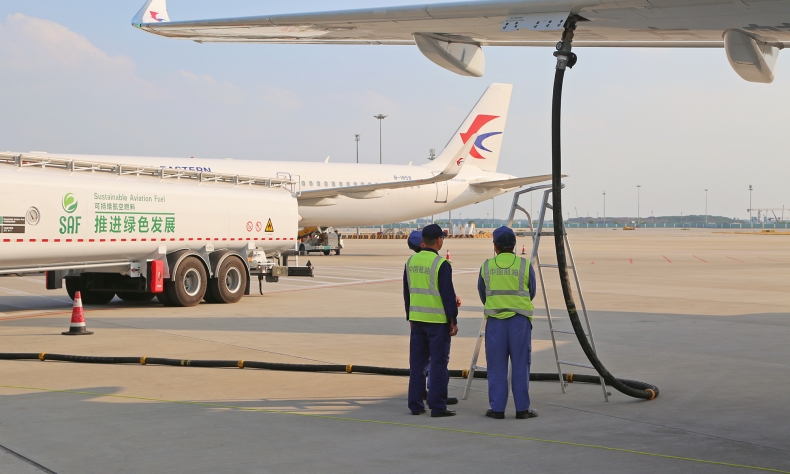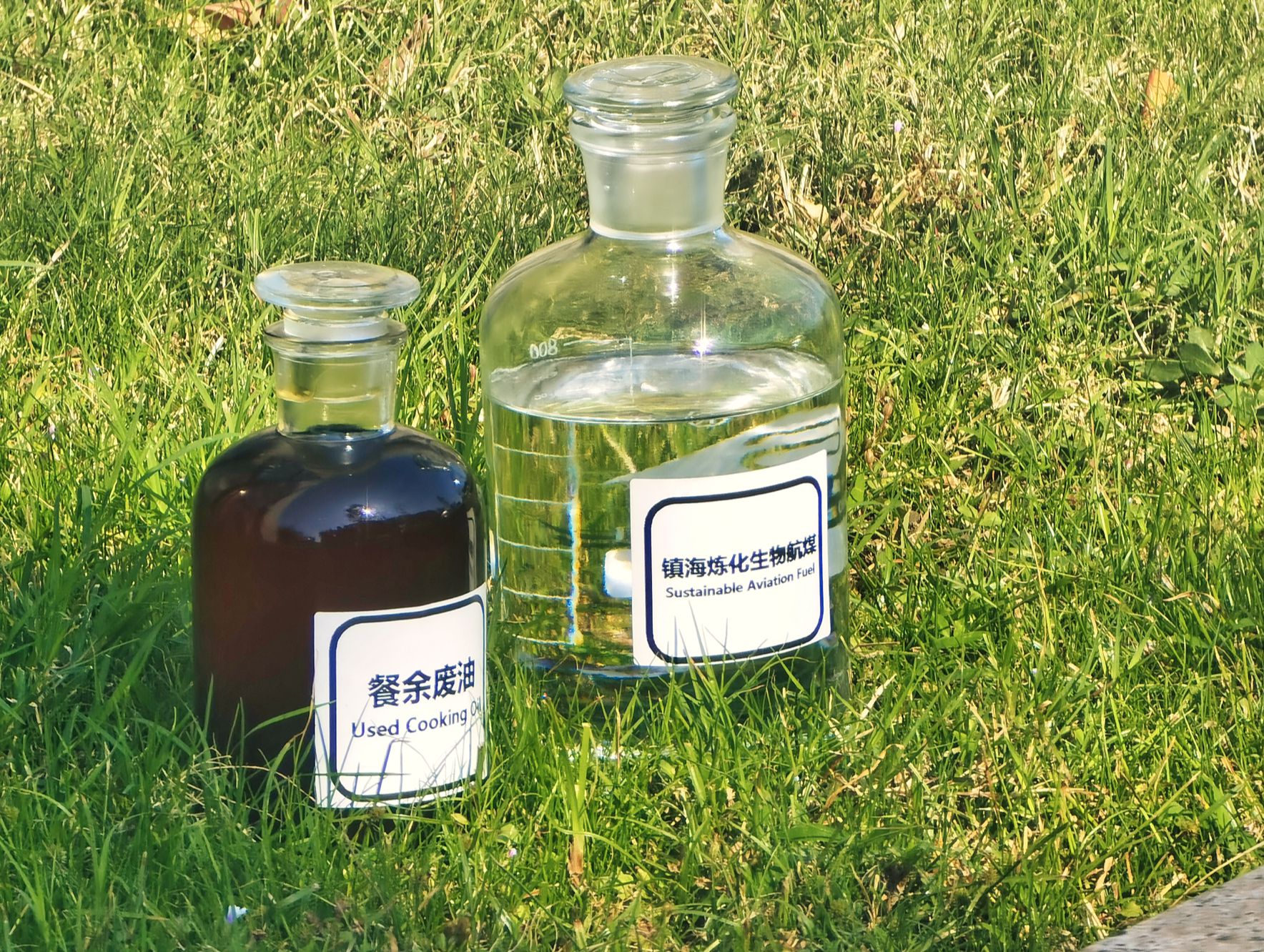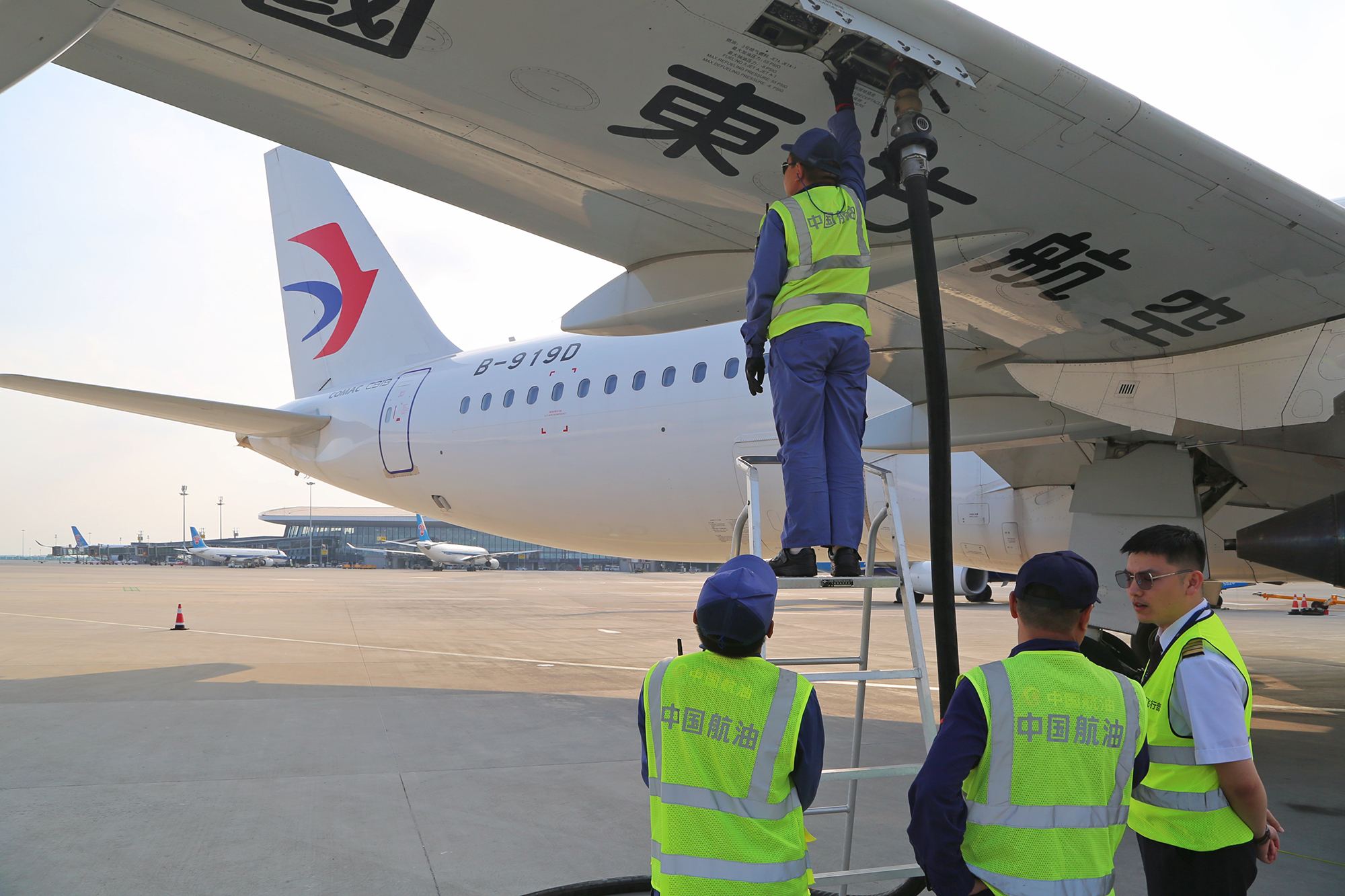Towards Greener Flying

China is currently accelerating the implementation of an autonomous certification system for sustainable aviation fuel, contributing to global sustainable development goals for civil aviation.
At the 15th Airshow China, held in Zhuhai, Guangdong Province, from 12 to 17 November 2024, China Southern Airlines, in collaboration with the Global Sustainable Transport Innovation and Knowledge Centre and Airbus, presented a report on the development of sustainable aviation fuel (SAF).
The report shows the significant potential of the Chinese SAF market, which has distinct advantages in terms of resources. It says that China is positioning itself as a major player in this field, given its prominent status in the global supply chain.
SAF is derived from renewable resources or biological waste. In comparison to fossil fuels, it has the potential to reduce carbon dioxide emissions by up to 80 percent over the entire lifecycle of an aircraft, with the possibility of achieving up to 100 percent reduction through future technological developments.
In light of the challenges posed by climate change, the aviation industry is committed to a green transition. The International Air Transport Association (IATA) has set an ambitious target of achieving carbon neutrality by 2050. The development of SAF is regarded as one of the most effective solutions for achieving this objective.
Many countries are taking action to meet the target. As part of the Carbon Offsetting and Reduction Scheme for International Aviation (CORSIA), the European Parliament has mandated that the fuels available at airports within the European Union include a minimum of 2 percent SAF in their composition by 2025, with an incremental increase to 6 percent by 2030 and a gradual rise to 70 percent by 2050. The U.S. and Canada are actively supporting SAF R&D and production by providing funding. In addition, developing countries, including China, are implementing policies and incentives to promote the use of these products, thereby contributing to the advancement of environmentally conscious air transportation.

Converting waste into value
The Civil Aviation Administration of China (CAAC) has set a target of 50,000 tonnes of SAF consumption during the 14th Five-Year Plan period (2021-2025). China Petroleum & Chemical Corp. (Sinopec) reported that the current annual consumption of aviation fuel in China exceeds 30 million tonnes. A total replacement with SAF would result in a reduction of carbon dioxide emissions by nearly 55 million tonnes a year, which is equivalent to planting 500 million trees or immobilising more than 30 million cars for a year.
In September 2024, the National Development and Reform Commission, in collaboration with the CAAC, initiated a pilot project for the utilisation of SAF. A total of twelve flights operated by Air China, China Eastern Airlines, and China Southern Airlines have commenced using this environmentally friendly fuel.
The project is being executed in two phases: the first from September to December 2024 and the second throughout 2025, with an increasing level of participation from industry stakeholders. On 19 September 2024, China Eastern Airlines’ C919, a large passenger aircraft developed by the Commercial Aircraft Corp. of China (COMAC), made its inaugural commercial flight using SAF, flying from Beijing to Shanghai and carrying 129 passengers.
On 5 June 2024, an ARJ21 regional jetliner, which COMAC has renamed the C909, and a C919 aircraft completed successful test flights using SAF produced in China, marking a significant step forward. Cao Dongxue, Sinopec’s chief expert, revealed that the fuel used for these flights comprised 40 percent used cooking oil (UCO) blended with conventional fuel. “These test flights demonstrated the compatibility and safety of SAF with Chinese commercial aircraft and paved the way for its large-scale deployment in the country,” he told China Central Television.
Sinopec has been investing in SAF R&D since 2009. In 2013, an Airbus A320 operated by China Eastern Airlines carried out a successful test flight, making China the fourth country to have autonomous R&D technology in this field. Sinopec has developed innovative catalysts and processes to ensure a stable transformation of UCOs. The Zhenhai refinery, the first industrial unit in Asia capable of producing SAF on a large scale, has a processing capacity of 100,000 tonnes of UCO per year. This is equivalent to the volume of UCO generated by a city of 10 million people.
The question must be asked: Why UCO? Shi Wencai, vice president of UOP Honeywell and general manager for China, told Jiangsu Now that recycling UCO to produce SAF offers significant benefits and is currently the most viable option.

High demand, great potential
The report, citing IATA forecasts, reveals that by 2050, SAF could account for around 65 percent of the emissions reductions needed to achieve carbon neutrality in the aviation sector. To achieve this objective, it will be essential to significantly increase SAF production.
The origins of SAF can be traced back to 2008. From 2016 onwards, more mature technologies and industrial policies have gradually influenced the entire airline industry production chain. In recent years, supported by policies and industry collaboration, the research, development, and adoption of SAF have expanded beyond Europe and North America to the Asia-Pacific region and other global markets, signalling its transition into worldwide use.
Statistics show that since 2008, over 45 airlines and 400,000 flights have used SAF. IATA forecasts indicate that global SAF usage will reach 7 million tonnes by 2025, rising to 20 million tonnes by 2030.
In China, the catering sector consumes edible oils at a rate 2.73 times higher than in the U.S., the European Union and Canada combined. It is estimated that approximately 10 million tonnes of UCO are generated annually in the country. Once transformed into SAF, UCO represents a significantly higher value. However, according to Shi, there are still obstacles to overcome in terms of using UCO in aircraft, not least the high cost. The entire process, from recovery to conversion, incurs costs that are approximately three times those of traditional aviation fuel.
Furthermore, production capacity is limited. SAF projects in China have an annual production capacity of 200,000 tonnes, with expansion plans exceeding 3 million tonnes. However, this is insufficient compared with China’s annual consumption of 30 million tonnes of aviation fuel.
To address this challenge, experts emphasise the need to improve technology through joint research by companies and academic institutions to reduce production costs. On the other hand, greater political support is essential to improve the UCO recovery system and promote its widespread application.
China is currently accelerating the implementation of an autonomous certification system for SAF, with the objective of addressing gaps in raw materials, production and sustainability certification. The goal is to adopt a proactive stance in the aeronautical energy transformation, thereby contributing to global sustainable development goals for civil aviation.
“Currently, several Chinese airlines are actively testing the use of SAF for commercial passenger flights. Although still in its infancy, this initiative is a clear indication that the Chinese airline industry is moving towards a more environmentally friendly future,” said Cao.
 Facebook
Facebook
 Twitter
Twitter
 Linkedin
Linkedin
 Google +
Google +










